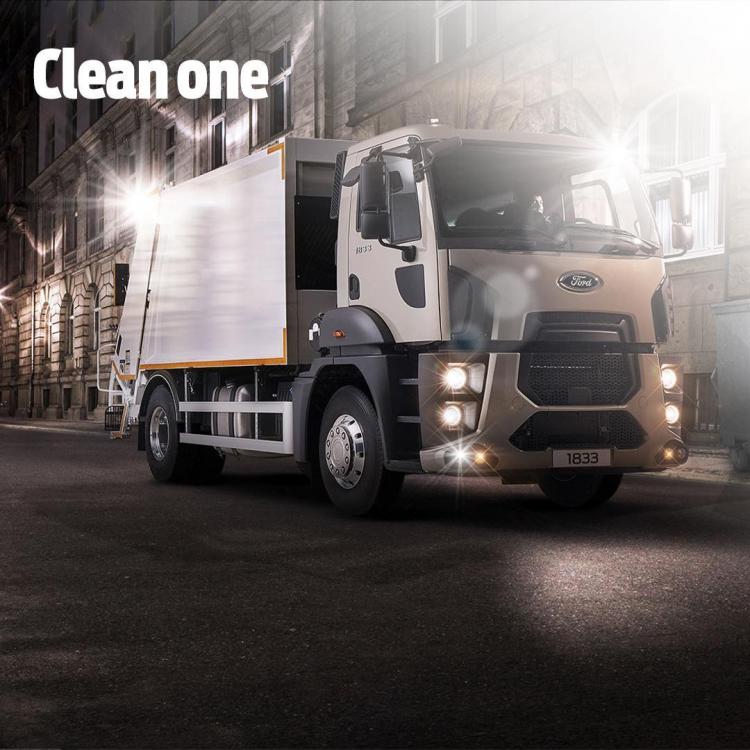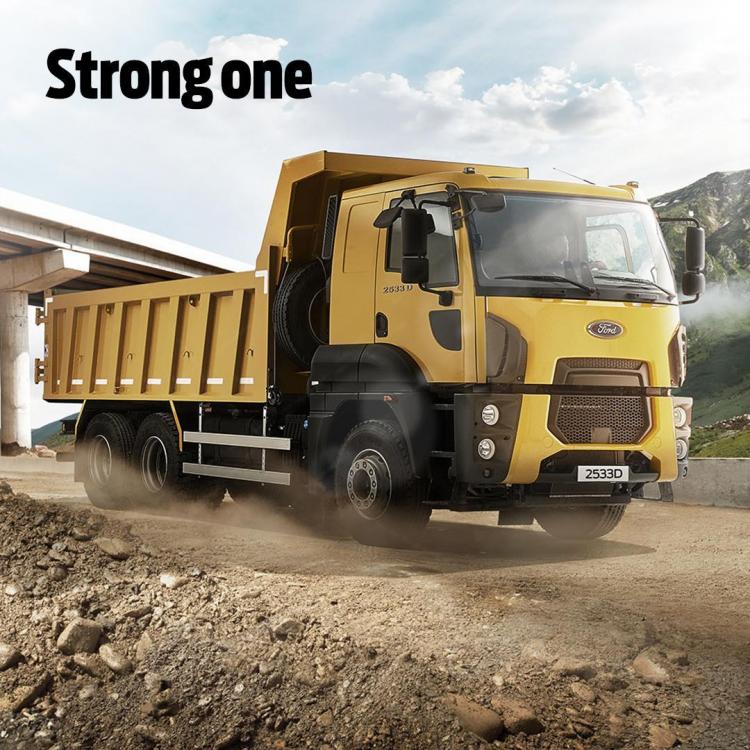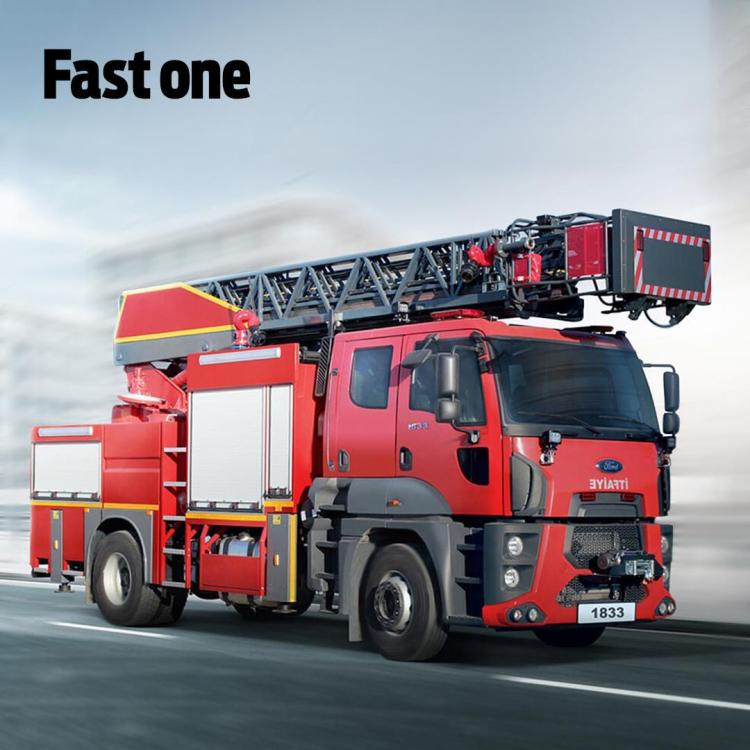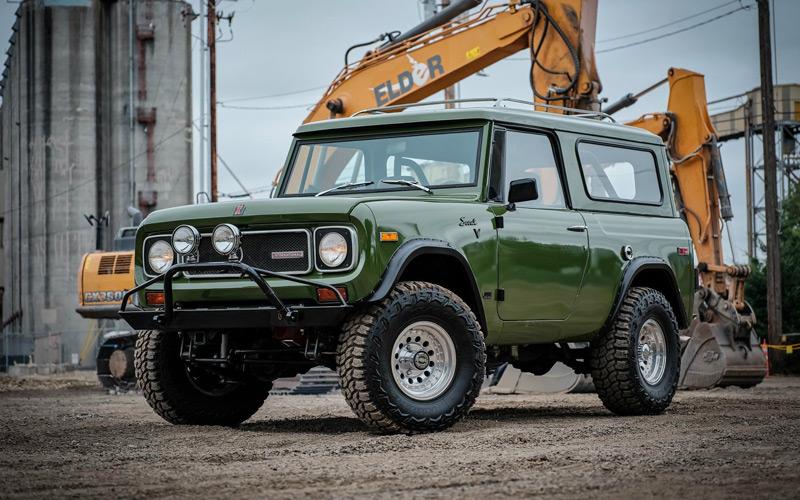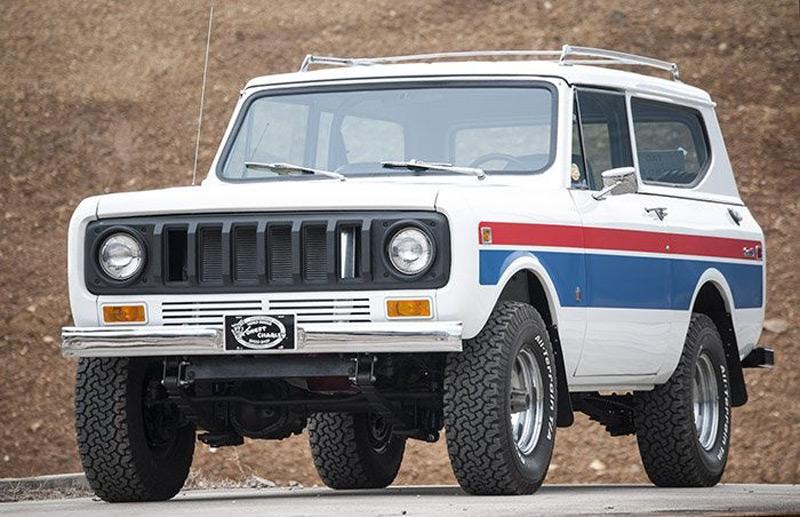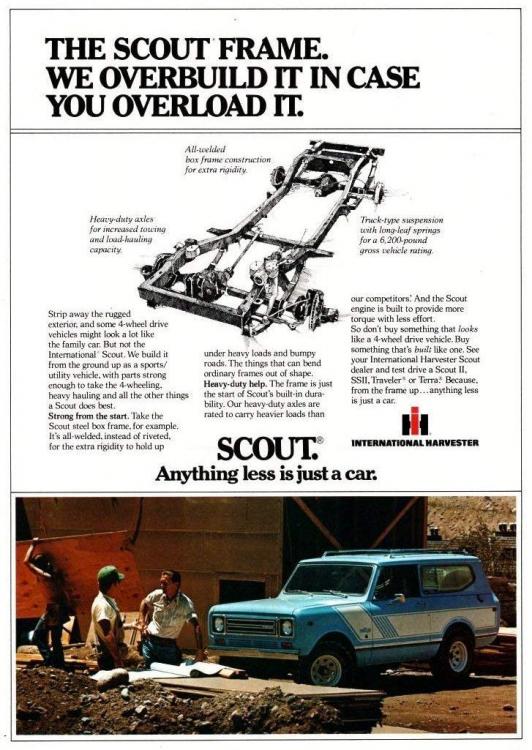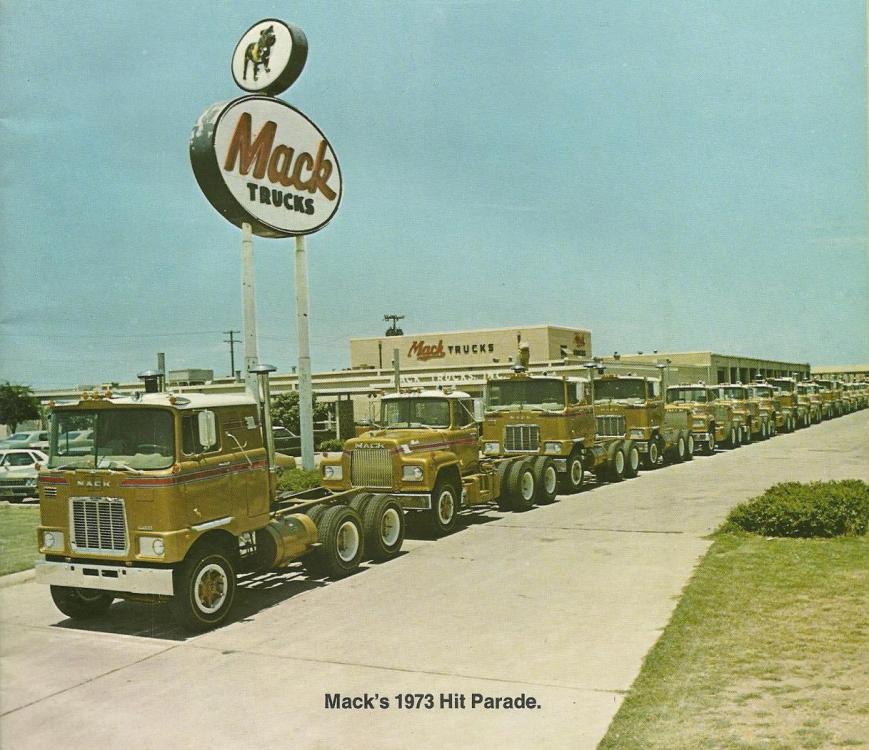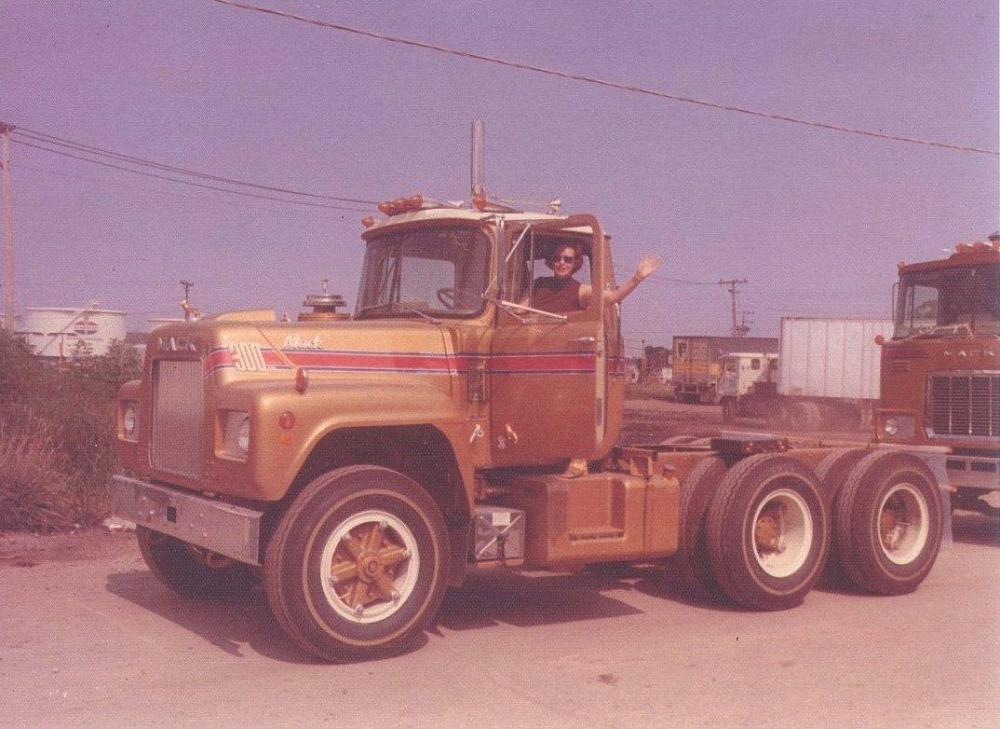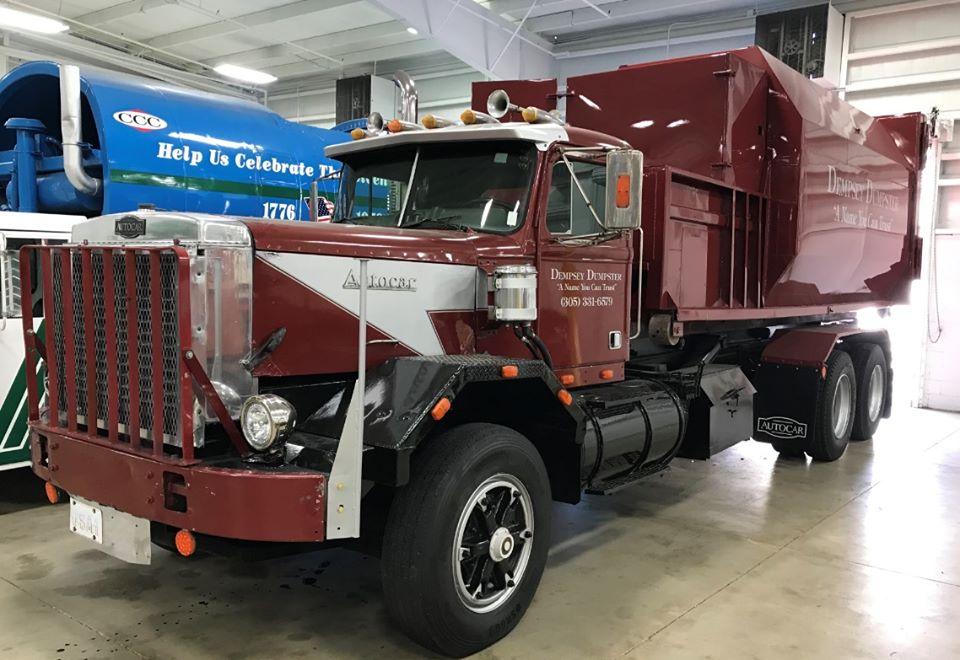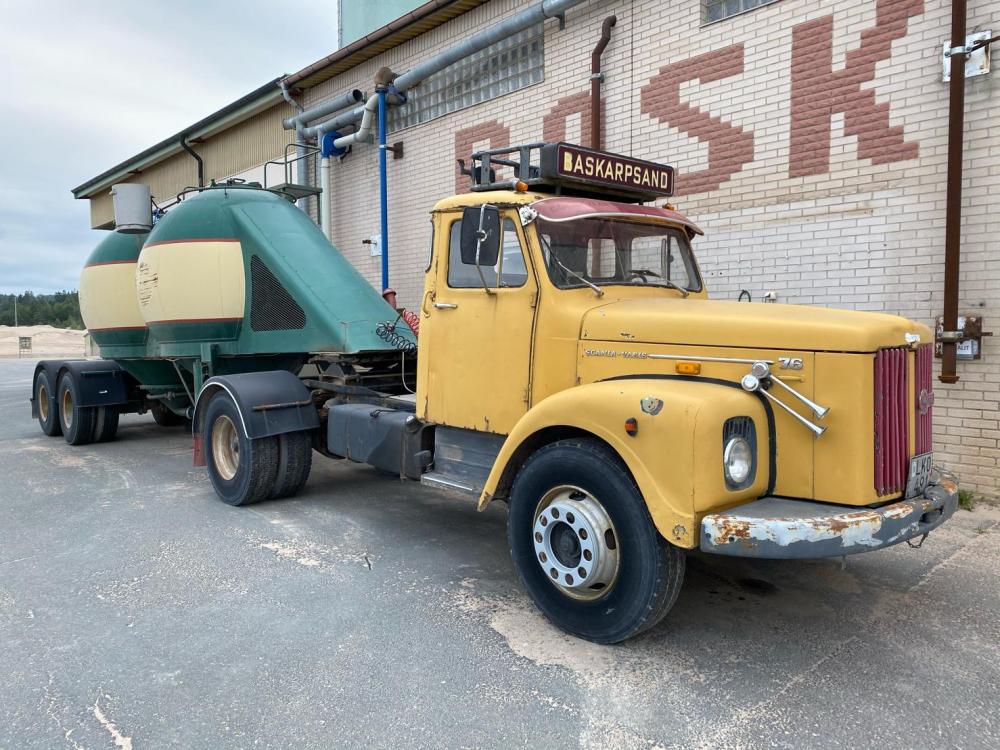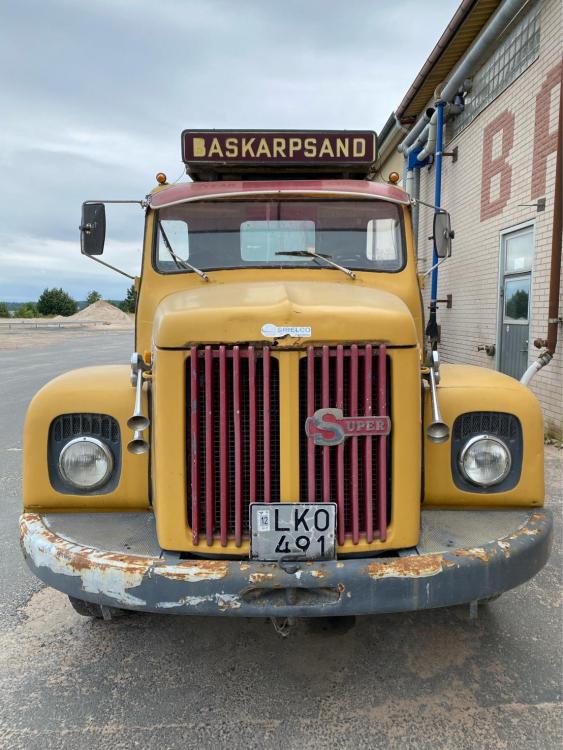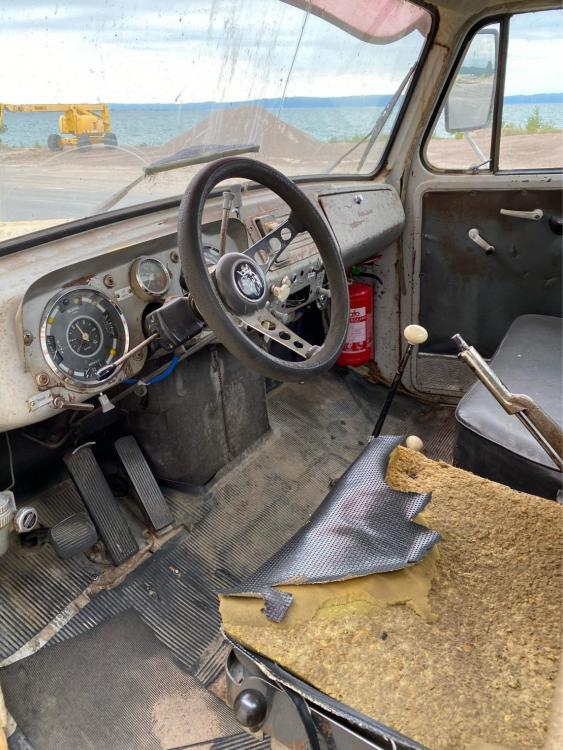
kscarbel2
Moderator-
Posts
17,802 -
Joined
-
Days Won
85
Content Type
Profiles
Forums
Gallery
Events
Blogs
BMT Wiki
Collections
Store
Everything posted by kscarbel2
-
Government and Municipality Fleets Depend on Ford Trucks
kscarbel2 replied to kscarbel2's topic in Trucking News
In no small part due to the enthusiasm and passion of the people at Ford Otosan, Ford Trucks is fast reestablishing itself as a major global market truckmaker. But I scratch my head when I think of Ford North America............the foolish management who kept the new-for-2011 Ranger out of N.A. until 2020. I think "medium" there is merely an afterthought, rather than an adventure to success. My gosh, look at the "world class" Ford F-MAX, including its proprietary components. -
Ford Trucks International / August 5, 2020 Ford heavy trucks are ready to serve day and night, wherever they’re needed in your city. Whether it’s keeping the roads clean or keeping people safe, Ford Trucks is always proud to support public services. .
-
Richard Truett, Automotive News / August 4, 2020 In a quiet backwater of the new-vehicle market during the 1960s and much of the '70s, four rugged off-road vehicles battled annually for the few thousand sales available: Land Rover's Series II (precursor to the Defender), the Jeep CJ (today's Wrangler), the original soft-top Ford Bronco and the International Scout. Two of those are once again available. The new Land Rover Defender arrived at U.S. dealers this spring, and an all-new Bronco arrives in less than a year. The Wrangler, of course, never went away and for decades has been uncontested in many ways. Only one of those original off-road 4X4s is missing from showrooms today: The Scout, which arrived in 1961 — five years before the Bronco — and can legitimately lay claim as one of America's first true SUVs. It isn't really clear who made America's first SUV. Chevrolet claims the Suburban, which has been in production since 1935, owns the title. But for most of its existence, the Suburban has not been a dedicated off-road vehicle. Nonetheless, the latest shift to rugged off-road SUVs is turning out to be a big thing. Land Rover's plant in Nitra, Slovakia, is working to fill a backlog of 20,000 orders for the latest Defender. Ford has received 150,000 reservations for the new Bronco and is looking at ways to increase production. Wrangler sales have set records in recent years, thanks to constant improvements covering everything from powertrains to refinements that keep wind, water and dirt out of the interior. Vibrant community Although the Scout was discontinued in 1980, there is the same kind of vibrant enthusiast community keeping the old nameplate going that helped convince Land Rover and Ford officials to develop a new Defender and Bronco. Even as Scout clubs and a cottage industry have grown over the years to keep the SUV's following alive, Navistar International spokeswoman Bre Whalen says the company's focus is on commercial trucks and that there are no plans to re-enter the consumer market. The light-vehicle marketplace is probably not a priority when the Illinois company is struggling to meet demands of the heavy truck industry it serves. The pressure to hike fuel economy and lower emissions, combined with developing trucks with self-driving features, are capital-intensive undertakings. And then there is a potential buyout from Volkswagen Group's truck unit on the table. Lynn Faeth, who owns the Scout Connection in Fort Madison, Iowa, a business that buys, sells and restores classics Scouts and sells repair parts, says Scout owners would love a modern version — not to replace their classics, but to be used alongside them. And he says executives at International are aware of the cult following the Scout has attained. Arnold Leos, president of Scouts West, a club with three chapters in California, says many members want International to bring out a new version. Stubby two-door International built the Scout from 1961 to 1980 over two generations. The original Scout, a stubby two-door soft-top, had a 10-year run and was replaced by the Scout II in 1971. That model could be had with a removable fiberglass hard top. It sported many technical upgrades and legitimately challenged the Wrangler for several years. The Land Rover Series II was withdrawn from the U.S. at the end of 1974, while Ford's Bronco — basically little changed from the 1966 original — remained in production until 1975. It was replaced with a completely different model the following year. Nearly every automaker today has a showroom packed with cookie-cutter SUVs and crossovers. These are, essentially, the new sedans. They look alike, cost alike, perform alike; there's basically no difference among a Chevy Equinox, a Ford Escape, a Honda CR-V, a Toyota RAV4, a Kia Sportage and dozens of others. So it's no wonder that a growing number of consumers want an SUV that really can take them anywhere. Faeth said he is watching the talks between Volkswagen and Navistar. If that deal comes to fruition, it might help bring about a new Scout. "You never know what could happen," Faeth said. Until then, classic Scouts will have to suffice, and it looks like they will. Says Leos: "There's a real enthusiastic group that keeps 'em going, and they are still off-roading." .
-
Hackett won over some dealers, but not Wall Street Nick Bunkley, Automotive News / July 4, 2020 DETROIT — Ford Motor Co. stock lost 35 percent of its value in the three years that Mark Fields was CEO. Under his successor, Jim Hackett, the stock has fallen 38 percent. Despite an overhaul of the product lineup and his $11 billion restructuring to make the company a more agile competitor, the continued decline in Ford's valuation on Wall Street may be how shareholders primarily remember the former Steelcase CEO who was brought in as a "cultural change agent." After coming out of retirement to replace Fields in the hopes of reinvigorating the automaker, Hackett will leave behind a legacy of mixed results. That could change depending on how Ford does in the coming years under Jim Farley. "I was always impressed by the fact he was always thinking ahead," said Rhett Ricart, CEO of Ricart Automotive Group. "He made a lot of good moves behind the scenes that I think he'll get more credit for as time goes on. I think he did an admirable job in very tough circumstances." Hackett streamlined Ford's operations, which included eliminating thousands of salaried jobs, and gave remaining workers the ability to act quicker with less bureaucracy to navigate. He introduced new phrases to the Ford lexicon — such as "fitness," "clock speed" and "design thinking" — but his abstract way of speaking hurt his ability to win the confidence of workers and dealers, especially early on. Hackett told Ford employees to separate issues into the "now," "near" and "far," likening the view to a bull's-eye with those words in concentric circles. His job, he told them, is to manage Ford in each of those circles to ensure success. "For his ability to drive change into a company like Ford, I think history will be very kind," Farley told Automotive News. The upcoming Mustang Mach-E electric crossover and Bronco SUV have been received positively, but quality problems marred last year's launch of a redesigned Ford Explorer. Profits frequently lagged the results posted across town by General Motors. After a "mediocre" performance in 2018, Hackett urged employees to "bury the year in a deep grave." In 2019, which he promised would be a "year of execution," the Explorer problems contributed to a 99 percent drop in profits. Then Ford suffered more setbacks from the coronavirus pandemic this spring, though it reported better-than-expected second-quarter results last week. After some dealers complained that Hackett was too aloof in his first year as CEO, he apologized and promised to be more accessible. In the end, many dealers came to speak positively about him and the changes he made. "I don't know that you can give him a grade that isn't an A or a B, from a dealer perspective," Ricart said. "Now if you're an investor, you'll say that you aren't making any money on your investment … but in the grand scheme of things, there's some hot product that's coming." Hackett pushed back the timeline for Ford to roll out autonomous vehicles, saying the company and others in the industry "overestimated" how quickly the technology would be ready. At the 2018 Automotive News World Congress, nine months into his tenure, Hackett dismissed speculation that he wanted to get back to retirement quickly. "Every month on the Ford job is a marble in a jar," Hackett said at the time. "Imagine there's 84 marbles in that jar. I've now taken nine out. The wisdom in that is how fast they go." In the end, Hackett will have taken out fewer than half of those 84 marbles. But he told Automotive News last December that he already was seeing real progress in his transformation plan for Ford. "I see a dramatic improvement in the business," Hackett said. "When I came in, it was my observation that it had been frozen a little bit, like caught in amber. Everything that was great about it was frozen. ... Ford needed to break the amber and start to transform."
-
Golden R?
kscarbel2 replied to Prowrench's topic in Antique and Classic Mack Trucks General Discussion
It's seems like just yesterday that I was standing between a new "Cool Power" 300-equipped R-model, and F-model. Where did all the years go? I feel no older than that day in 1973. .- 33 replies
-
- 10
-

-

-
Nikola Falls After Loss Edward Ludlow, Bloomberg / August 4, 2020 Nikoa Corp.’s shares fell Tuesday after hours on the company’s debut earnings release. The would-be maker of battery-electric and fuel cell heavy trucks reported a net loss for the second quarter of $86.64 million (up from $16.7 million a year earlier) as it moves toward production of its vehicles. Nikola claims it will begin fleet testing of the BEV version of its semi truck -- the Nikola Tre -- with select customers in 2021. The hydrogen fuel cell vehicles will be built in Arizona from 2023, at a site which is under construction. The company ended the quarter with around $707 million cash on hand. It also hopes to raise an additional $264.5 million in cash through the exercise of the 23 million outstanding public warrants at an exercise price of $11.50. Nikola generated revenue of just $36,000 (you read that correctly: thirty-six thousand) from solar installations, but the release states these aren’t tied to the company’s core operations and are expected to be discontinued.
-
Ford CEO Ending Stormy Tenure Makes Way for Heir Who Bleeds Blue Keith Naughton, Bloomberg / August 4, 2020 Ford CEO Jim Hackett knew it was time to retire -- again -- when he watched his heir apparent rise to the occasion of a global pandemic that the carmaker thought would lead to a $5 billion quarterly loss. The former office-furniture executive stepped back into a CEO role at the begging of Executive Chairman Bill Ford but had struggled through a stormy tenure at the second-largest U.S. automaker. As Hackett watched Chief Operating Officer Jim Farley shave more than $3 billion off the deficit Ford had been expecting, he realized it was time to leave. “It kind of hit me like a lightning bolt that this is really the right time,” Hackett, 65, told Bloomberg News in an interview. “I said to myself, ‘If I retire now, Jim can take the advantage of all these things he and I have done together.’” Farley, 58, is described by peers as having the will and the skill to get Ford out of the rut it’s been in since the departure of Alan Mulally, who hocked the company’s blue-oval logo to hoard cash and was the only Detroit CEO to keep his carmaker out of bankruptcy in 2009. Farley has spoken about the challenges Ford faces now in stark tones and has warned he may continue to break china and bruise egos, as he has on his way to the top. “For me on a personal level, it’s quite -- sorry, I’m just getting a little emotional,” Farley said, choking back tears during a phone interview. Bill Ford, the great-grandson of founder Henry Ford, convinced Farley to leave Toyota Motor Corp. in the lead-up to the global financial crisis. His own grandfather, an orphan, was employee No. 389 at the company and worked at a factory near Detroit that built Model Ts. “It’s quite humbling to think about my grandfather going into Highland Park and how humble his life was before that,” Farley said. “How much opportunity happened because of Ford. I just feel very in debt to the company.” Unstable Footing Ford was already on wobbly footing before Farley and Hackett were drawing up plans to recover from months-long factory shutdowns forced by efforts to contain the coronavirus. The company was two years into an $11 billion restructuring Hackett laid out to update a global vehicle lineup that had gotten stale under his predecessor, Mark Fields. He prioritized loading new models with greater connectivity features and spent heavily on electrifying powertrains and freed up resources by killing off passenger cars in North America. But the first of Ford’s major redesigns under Hackett’s watch, the Explorer, went awry due to factory personnel and technological problems. The company also has been behind the curve from an electric-vehicle standpoint, with the Mustang Mach-E coming out well after Tesla Inc. has made plug-in models more mainstream. It took decades for middle managers to convince top brass to bring back the Bronco sport-utility vehicle, and the all-important F-150 has aged relative to General Motors Co. and Fiat Chrysler Automobiles NV full-size pickups. “We would have thought Hackett would have stayed on through the current product launch cycle (F-150, Bronco) with a transition in 2021,” Joe Spak, an analyst at RBC Capital Markets who rates Ford the equivalent of a hold, wrote to clients. “The timing occurring now to us suggests Ford is ready to take on a more aggressive, faster-moving path forward.” Ford shares rose 2.5% on Tuesday, paring their decline during Hackett’s tenure to 37%. Hackett’s Challenge Hackett said he made it clear to Bill Ford from the beginning that he was “not the long-term solution” for the carmaker when, in 2017, the great-grandson of Henry Ford asked him to come out of retirement. The former CEO of furniture maker Steelcase Inc. said he was more focused on changing Ford’s culture than currying favor with Wall Street. “I was going to be a challenge for a world where everything revolved around Wall Street,” Hackett said. “What I wanted to do was work from the inside on our employees, on our executives, on motivation to want to change the arc of the company.” During a call with reporters, Farley named the likes of Amazon Inc., Apple Inc. and Baidu Inc., the Chinese search-engine giant, when listing companies he views as Ford’s competitors. He said the carmaker will push further into digital services as it connects all its vehicles to the internet. “Will we need new talent to help us get there, to compete against these new competitors? Absolutely,” Farley said. “Do we need to challenge our business model? In some cases we will have to. So it will require new ways and new capabilities.” ‘Car Nut’ While Farley spent almost a year focusing on Ford’s future as president of new businesses, technology and strategy before becoming COO, his ties to Ford’s past go beyond family. Two years ago, he drove his 1965 Ford GT40 in an event loosely based on the famous 24 Hours of Le Mans endurance race. A 1973 Bronco and new Mustang are his vehicles of choice for getting to the office. “Farley is a life-long car nut and has just very, very deep automotive automotive experience, both at Ford and Toyota,” said David Whiston, an analyst with Morningstar Inc., who rates the company a hold. “Farley is not about an esoteric process or fancy chit-chat. He wants results and he works like a lunatic.” Building revenue from digital service, while putting out electric and autonomous vehicles, could finally reverse Ford’s six-year stock slide, Farley said during the interview. Its market capitalization has slipped to just $27.2 billion, less than a tenth of Tesla’s stock value. “We have this incredible opportunity to create value that’s not reflected in our valuation,” he said. “And that’s the intersection between technology and our traditional products. These growth initiatives will really change Ford for many years to come.”
-
Ford Elevates Farley to CEO After Hackett’s Turnaround Bid Fails Bloomberg / August 4, 2020 Ford Motor Co. said it will promote Jim Farley to CEO on October 1 to replace Jim Hackett, who has elected to retire after his three-year bid to turn around the automaker failed to gain traction. Farley, 58, became chief operating officer in March when his main internal rival was ousted following the botched launch of the Ford Explorer sport-utility vehicle. Ford’s stock was slumping under Hackett, 65, before the coronavirus pandemic exacerbated the second-largest U.S. automaker’s woes. Last week, Ford posted a second-quarter operating loss that was less than half the $5 billion deficit it had predicted, due in part to demand for its SUVs and trucks holding up better than feared. But some of the company’s overperformance also could be chalked up to an on-paper gain from its investment in self-driving startup Argo AI. Ford shares climbed as much as 1.7% shortly after the open of regular trading. The stock is still down 28% this year.
-
Jim Hackett to retire as CEO of Ford; Jim Farley named successor Michael Martinez, Automotive News / August 4, 2020 DETROIT — Ford Motor Co. CEO Jim Hackett will retire later this year after more than three years leading the automaker and will be succeeded by COO Jim Farley, the company said Tuesday. Hackett, 65, did not give a reason for his retirement, effective Oct. 1. Ford said he would work with Farley, 58, over the next two months to ensure a smooth transition. "I am very grateful to Jim Hackett for all he has done to modernize Ford and prepare us to compete and win in the future," Bill Ford, Ford's executive chairman, said in a statement. "Our new product vision – led by the Mustang Mach-E, new F-150 and Bronco family – is taking shape. "We now have compelling plans for electric and autonomous vehicles, as well as full vehicle connectivity. And we are becoming much more nimble, which was apparent when we quickly mobilized to make life-saving equipment at the outset of the pandemic." Hackett was elevated to CEO in May 2017 to be a change agent at Ford and help speed up its decision making. Under his tenure, Ford instituted a global redesign that prioritized what he called design-thinking. "My goal when I took on the CEO role was to prepare Ford to win in the future," Hackett said in a statement. "The hardest thing for a proud, long-lived company to do is change to meet the challenges of the world it's entering rather than the world it has known. I'm very proud of how far we have come in creating a modern Ford and I am very optimistic about the future."
-
Amazing restoration of a 1982 Autocar DK-64 by our friends at Waste Pro USA! Incredible Job! Always Up - Autocar Trucks .
-
Kodak Shifts Into Drug Production With Help of $765 Million U.S. Loan
kscarbel2 replied to kscarbel2's topic in Odds and Ends
MarketWatch / August 3, 2020 Shares of Eastman Kodak tumbled 24% in afternoon trading Monday, putting them on track for a third-straight double-digit percentage decline, after the company, which is getting into the pharmaceuticals ingredients business, disclosed that holders of convertible notes were exercising their right to convert notes into common stock. Kodak stock has now dropped 50% since skyrocketing 16-fold in three days to $33.20 on July 29, after the Trump administration announced on July 28 that Kodak received a $765 million loan, as part of a Defense Production Act directive to loosen the reliance on foreign sources for pharmaceutical ingredients. In an 8-K filing with the Securities and Exchange Commission on Monday, Kodak said the holders of the 5.00% convertible notes due 2021, which were issued in May 2019, are converted a total of $95 million of the notes into 29.9 million shares of Kodak common stock, on July 29. That would imply a value of $3.175 per converted share, while the stock was currently trading at $16.58. On July 27, Kodak granted CEO James Continenza options to buy Kodak stock at various strike prices, which are now all in the money, to "protect" him from dilution of his share holdings, in case the convertible debt issued in May 2019 were converted into stock. -
Jay Leno’s Garage - Early Car Aerodynamics: 1934 Chrysler Airflow
kscarbel2 replied to kscarbel2's topic in Odds and Ends
This is one of Jay's best video yet. Extremely rare car. For 1934, so far, far ahead of its time. -
-
I've gotten over the Model 3's expressionless front fascia. But I'm not crazy about most of the dash controls being on the tablet. As for build quality/pain finish, that's improving to acceptable levels. But this Sony car from a distance looks very impressive.
-
Too late to the party with nothing new to offer. Inferior to Paccar’s offerings. Can’r touch Freightliner, Navistar and Ford Medium on price. So what was the point of this exercise? Create a tax loss?
-
A protoype, it's arguably more attractive than industry leader Tesla's designs. .
-
Kodak Shifts Into Drug Production With Help of $765 Million U.S. Loan
kscarbel2 replied to kscarbel2's topic in Odds and Ends
Daily Mail / July 31, 2020 Kodak CEO Jim Continenza was awarded 1.75 million stock options one day before the Trump administration announced a $765 million loan to develop generic pharmaceuticals - sending stock prices soaring and netting the CEO a potential $30 million profit. CEO Jim Continenza and three other top Kodak executives were awarded stock options that included the right to buy Kodak stock at $3.03, $4.53, $6.03, and $12 per share until February 2026. According to filings obtained by the Popular Information newsletter, Continenza was the primary beneficiary, having been awarded 1.75 million options. Most of those options - 981,707 shares - were purchased at a stock price of $3.03 per share. Continenza was also awarded options at $4.53, purchasing nearly 300,000 shares. -
Kodak Shifts Into Drug Production With Help of $765 Million U.S. Loan
kscarbel2 replied to kscarbel2's topic in Odds and Ends
On Tuesday, July 28, the White House tweeted: "We have reached a historic deal with @Kodak to begin producing critical pharmaceutical ingredients right here in America!" And the stock lifted off, peaking the next day, July 29. I myself don't think the executive branch of the US government, nor any other branch, should communicate via Twitter. (For the record, I don't participate in any so-called social media including Twitter and Facebook). -
Kodak Shifts Into Drug Production With Help of $765 Million U.S. Loan
kscarbel2 replied to kscarbel2's topic in Odds and Ends
Kodak went from a low of $2.13 a share on Monday, July 27th, to a high of $60.00 on Wednesday, July 29th. -
Ford will defer some quarterly payments on Energy Dept. loan Reuters / July 31, 2020 Ford Motor Co. said Friday it had won approval to defer some quarterly payments due on its U.S. Energy Department retooling loan, but added it will repay the loan on time by June 2022. In September 2009, Ford was awarded a $5.9 billion low-cost government loan, a key source of liquidity in the aftermath of the financial crisis. The automaker said its loan was modified in June to reduce quarterly principal payments from $148 million to $37 million. Ford said it has $1.26 billion of remaining principal left on the loan. An Energy Department spokeswoman said "the flexibility the Loan Programs Office was able to provide through this loan modification is a good example of what (Energy) Secretary Brouillette meant when he asked for all of the Department’s resources to be supportive of the energy industry during the COVID-19 pandemic." Ford said "with COVID-19 related economic uncertainty remaining, we believe that is worthwhile to further strengthen our balance sheet and increase liquidity to optimize our financial flexibility." The company noted that if it opts to pay a dividend, repurchase shares above a certain threshold, or provide security to other lenders it will have to revert to the original payment schedule. The company said Friday that "deferring a portion of the principal until the maturity date will also result in incremental interest cost to Ford, in addition to the cost to modify the loan. All costs associated with the modification were covered by Ford through a higher interest rate." But it added, "the financing remains very cost-effective." The Energy Department did not comment.
-
The Xcient is a superb heavy truck. In Oz, they don't know how to get started.
-
Yes, they could. Their Euro 6 engine can also meet US emissions. Hyundai is contemplating bringing the Xcient to the states as a conventional (bonneted) cab truck.
-
Ford’s Attempt to Turn Corner Boosted by Earnings Beat Keith Naughton, Bloomberg / July 30, 2020 Ford Motor Co. posted much better-than-expected results for the latest quarter but projected a full-year loss as it attempts to pull off a restructuring amid the carnage caused by the coronavirus pandemic. The automaker said Thursday its operating loss in the second quarter was less than half the $5 billion deficit it had predicted, due mainly to undiminished demand for its sport utility vehicles and trucks despite springtime factory and showroom closures. Ford’s adjusted loss of 35 cents a share was considerably better than the $1.18 per share loss analysts forecast. The economic crisis caused by the viral outbreak hit Ford two years into an $11 billion global reorganization that leaves Jim Hackett, the company’s chief executive officer, little room for error amid an extended earnings slump. It also comes as the automaker prepares to roll out three critical new models aimed at reversing its fortunes: the electric Mustang Mach-E, the revived Bronco SUV and a redesigned version of its top-selling F-150 pickup, its most profitable model. The virus shutdown at Ford plants delayed those launches by about two months. Ford’s $1.9 billion loss before interest and taxes compares with crosstown rival General Motors’ second quarter loss of $536 million. In the third quarter, Ford is projecting an adjusted profit of $500 million to $1.5 billion. For the full-year, it expects to post an adjusted loss. Ford ended the second quarter with more than $39 billion in cash on hand, including $10 billion in new debt. Ford said it has repaid almost half of its $15.4 billion in revolving credit and expects to maintain or exceed a cash balance of $20 billion for the rest of 2020 “even if global demand declines or there is another major wave of pandemic-related plant closures.”
BigMackTrucks.com
BigMackTrucks.com is a support forum for antique, classic and modern Mack Trucks! The forum is owned and maintained by Watt's Truck Center, Inc. an independent, full service Mack dealer. The forums are not affiliated with Mack Trucks, Inc.
Our Vendors and Advertisers
Thank you for your support!


